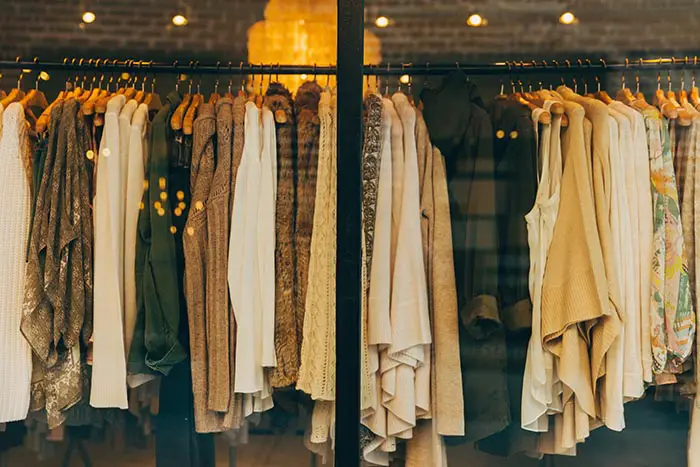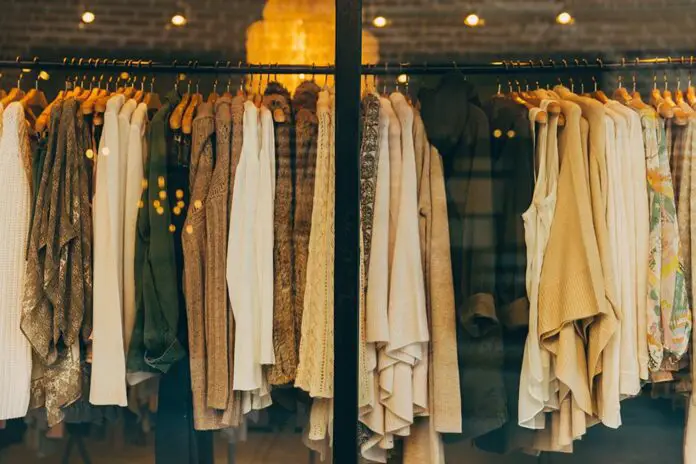The words ‘second-hand’ and ‘vintage’ are pretty popular in the fashion industry and are often interchangeable. During the past few decades, buying second-hand clothes and finding stunning vintage hidden gems in charity shops has become the norm.
Yet, many people are puzzled about these terms and unsure of their distinctions.
Vintage and second-hand clothes mean purchasing clothes that somebody else has worn and owned before, but that is the only link between them. So, what denotes an item as vintage vs. second-hand?
If you feel confused, continue reading and learn the differences between vintage and second-hand clothing to end the debate!
Vintage Clothing
Vintage clothing covers items produced in a different era, and the most recent one can be from the 1990s. It is hard for some people to discover the latest vintage trends, as clothes manufactured in the early 2000s aren’t classified as vintage trends yet.

Starting with the 1950s swing up to the mega-popular disco style in the 1970s, each era comes with a touch of originality, making the vintage clothing mega-popular.
This clothing type features a premium price defined by its rarity, brand, age, and current condition. Still, you must be mindful when choosing a vintage item.
Many companies follow the trend of promoting some of their clothes as ‘vintage style’ to make their customers believe that they are purchasing vintage. In truth, they are merely selling copies of classic items from the past.
Second-Hand Clothing
Generally, second-hand clothing includes clothing that another person owned before. It doesn’t matter whether the item is newer than the last year or is from another decade. All clothes that aren’t brand-new off the hanger belong to the second-hand category.
Second-hand clothes are more affordable when compared to new pieces of clothes, but that depends on the quality and retail value. Items that the previous owner used only once or twice can cost a lot, but they will still be less expensive than buying a brand new item.
Vintage Clothes vs. Second-Hand
Due to their age, most vintage items are second-hand, but that’s not true for all. You have probably come across the phrase ‘new vintage,’ referring to clothes designed in the ‘50s or ‘60s.
These are items that no one has ever worn before. Although ‘new vintage’ clothes are rare, vintage clothes fans hunt them all the time.
Besides the age difference between vintage and second-hand clothing, price, style, and availability are the other key differences.
Price
People buy second-hand items as they are less expensive than new clothes. While second-hand products often cost less and are easily found on the market, vintage garments may cost more than buying a new item from the same brand.
Vintage clothes are a rare treasure for some people and have higher value when compared with second-hand items manufactured a few years ago. So, while you can buy a second-hand item for a sum as cheap as $1, you can find a vintage item worth as pricy as a few thousand dollars.
The price of the vintage clothes is proportional to their age, meaning older items from the 1950s or 1960s cost more than newer from the 1990s. On the other hand, second-hand items cost more if they are more contemporary.
Style Statements
There is a vast difference in the style between vintage and second-hand items. Namely, vintage clothing fanatics look for one-of-a-kind items and don’t want somebody else owning or sporting that particular model.
Most vintage fans love this style as a considerable percentage of these clothes types belonged to a famous person or were a part of an important event, music spectacle, or movie in the past. Unlike vintage clothes, second-hand clothes aren’t rare examples but are more like everyday items.
So, if you are looking for simple things, check the nearest second-hand shop. People sell this type of clothes, for instance, because they don’t need it anymore or that specific piece doesn’t fit them.
Availability and Combinations
You can’t find vintage clothes as often as second-hand clothes and accessories. You must search the net or hunt vintage shops or malls to find such products. Unlike vintage shops, you can find second-hand shops around every corner.
Combining clothes is another difference between vintage and second-hand clothes. You should mix and match your vintage piece with something trendy to avoid a costume look.
When you buy second-hand clothes, you can combine them as you prefer according to your taste as they are regular items but for a more acceptable price.
Final Words
Bargain hunters and authentic pieces fans can always find what they need in the nearest department store or marketplace. People can also purchase their favorite clothing online from the vast array of online platforms offering cool clothes that cater to your particular taste!
##
With love,
FWO



